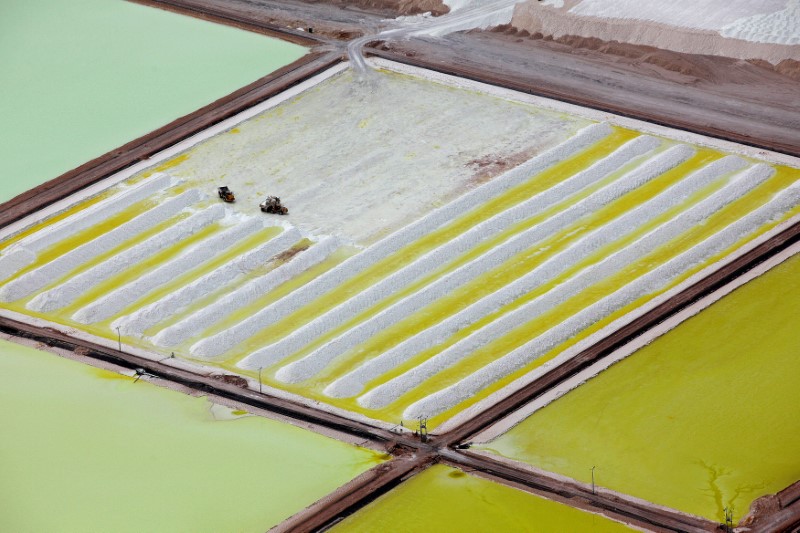Maximus Resources Ltd (ASX:MXR, OTC:MXRRF) has further validated its exploration methods and enhanced the critical minerals potential of the KOMIR Lefroy Lithium Joint Venture near Kambalda in Western Australia with high-grade results from the Bird Rock and Kandui prospects.
Final assay results have been received from a ~1,500 metres multi-target reverse circulation (RC) drill program, which incorporated a maiden drill program at the Bird Rock Prospect and a third-phase drill program at the advanced Kandui Prospect.
High lithium grades
At Bird Rock, assays confirm shallow high-grade spodumene mineralisation with highlights of:
- 5 metres at 1.81% Li2O from 101 metres, including 3 metres at 2.33% from 102 metres;
- 5 metres at 1.45% from 95 metres, including 1 metre at 1.8% from 96 metres and 2 metres at 2.19% from 98 metres; and
- 6 metres at 1.14% from 17 metres, including 2 metres at 1.69% from 18 metres.
The consistently high lithium grades across multiple drill holes firmly position Bird Rock as a high-priority target for ongoing exploration.
Follow-up drilling at Kandui has identified a new high-grade pegmatite, thus confirming geological modelling. This work has intersected 6 metres at 2.23% Li2O from 26 metres, including 4 metres at 2.88% from 27 metres.
Several shallow dipping spodumene-bearing pegmatites at Kandui have been defined across a large area of ~2 kilometres x ~1.5 kilometres.
Highlights fertility
Maximus’ managing director Tim Wither said, “The discovery of spodumene-bearing pegmatites at Bird Rock highlights the fertility of Maximus’ tenements and importantly the effectiveness of the completed soil geochemistry sampling program.
“The systematic approach to defining drill targets has been a success and will be applied to numerous other targets within the Lefroy Lithium Project area.
“The drill results from our maiden drill program at Bird Rock have shown a vertically plunging pegmatite, which is different to shallow dipping stacked pegmatites discovered at Kandui.
“The vertical component of the Bird Rock pegmatite has similar vertical geometry to that observed at Mt Marion ~16 kilometres to the north which lies on the same Spargoville Shear zone structure, reinforcing the potential of the surrounding geology.
“Bird Rock remains open at depth and down dip, with additional drilling required to identify areas where the pegmatite may be thicker or where blind pegmatites may be present. A close space aero-magnetic survey is being planned to assist in identifying potential drill target areas.”
About Lefroy
The 100%-owned Lefroy Project is on granted mining tenements in Western Australia’s highly prospective Eastern Goldfields Lithium-Cesium-Tantalum (LCT) Province, near Mineral Resources’ Mt Marion Lithium mine and processing facilities.
The Republic of Korea’s government mining agency, Korea Mine Rehabilitation and Mineral Resources Corporation (KOMIR) has the option to acquire up to a 30% interest in Lefroy, by investing US$3 million, with Maximus as project manager.
Third phase at Kandui
A third-phase drill program at Kandui was undertaken following refinement in the company’s geological modelling, which highlighted several areas that require further drill testing. The third-phase drill program consisted of five RC holes for ~800 metres.
This drilling at Kandui has followed up previous results that intersected several stacked shallow-dipping spodumene dominant pegmatites across a wide area, such as:
- 6 metres at 1.11% Li2O including 3 metres at 1.99% from 91 metres;
- 5 metres at 1.11% from 111 metres, including 3 metres at 1.72%; and
- 5 metres at 0.77% from 59 metres, including 3 metres at 1.18%.
Given the limited drilling and the confirmed high lithium grades, Kandui remains a high-priority exploration target. All pegmatites intersected remain open along strike and at depth, highlighting the potential for identifying significant concealed pegmatites with further step-out drilling.
Modelling validated
“The third-phase drilling at Kandui continues to validate our advanced geological modelling and as more data is acquired, further targets of the area where the pegmatites may be thicker evolves,” Wither said.
“The intersected pegmatites in the third round are our best to date confirming the fertility of the Kandui pegmatites with 6 metres at 2.23% Li2O from 26 metres, including 4 metres at 2.88% Li2O.
“The Kandui target is a very large area covering more than ~2 kilometres x ~1.5 kilometres, with plenty of room for an economical deposit to be found.
“Modelling from the latest results has identified an updated target area and a plan forward. We look forward to drilling again with our lithium partners KOMIR.”
What comes next?
The next phase of exploration at Lefroy will leverage the comprehensive geochemical and geological datasets compiled over the past 12 months.
This phase will focus on targeting concealed spodumene-bearing pegmatites by integrating these datasets to identify structurally favourable zones and areas with potential for grade and thickness enhancement along fractionation trends.
Additionally, targets will be further refined by incorporating close-spaced aeromagnetic data to identify demagnetised zones, offering a more precise and targeted exploration strategy.
A follow-up drill program is being planned at the Bird Rock and Kandui prospects.
